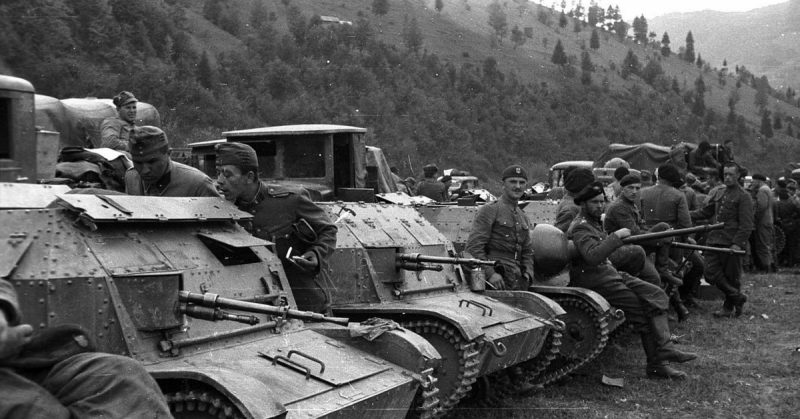The invasion of Poland was one in a long line of acts of Nazi German aggression. It was also the one that tipped Europe into the darkness of WWII.
The Start of September
The invasion had been prepared for a long time. It finally began on September 1, 1939.
Practicing in Spain
Some of the German troops, especially the pilots of the Heinkel He111 Bombers, had practiced their skills in the Spanish Civil War. Sent to support General Franco’s nationalist forces, they had carried out the heavy bombing of Republican Spanish cities. It proved the devastating effect mass bombing could have and provided valuable combat experience.
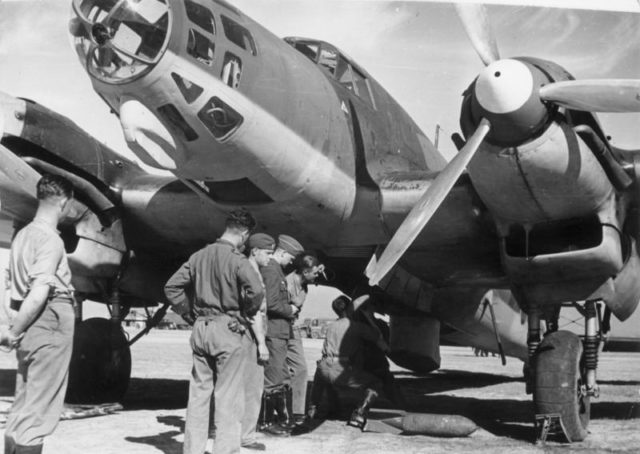
All Along the Border
1,250 miles of border separated Germany from Poland. All along the line, massed German troops attacked.
Allies in the West
The Poles had powerful Allies. They had had a treaty with France since 1921 and one with Britain beginning in 1939.
However, Britain and France were far away. They could not quickly bring forces to Poland’s defense. They were also wary of war with Germany and so delayed for several days before declaring war, hoping they could convince the Germans to withdraw.
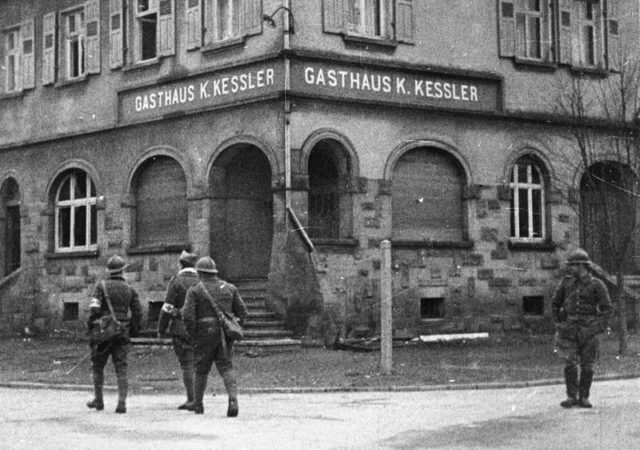
55 Divisions to 17
At the start of the invasion, 55 German motorized and armored divisions went into action in Poland. They vastly outnumbered the Polish troops facing them – 17 infantry divisions, six cavalry brigades, and three infantry brigades.
Thirteen Polish divisions were on their way to the border having mobilized the day before the invasion. Another nine were at their barracks, mustering for war.
Lancers
The Polish army was much less modern than the German one. The out-of-date troops were mown down by modern firepower. Cavalry though never charged at tanks, it was used as a mobile reserve of the Polish armies and was using mostly infantry tactics.
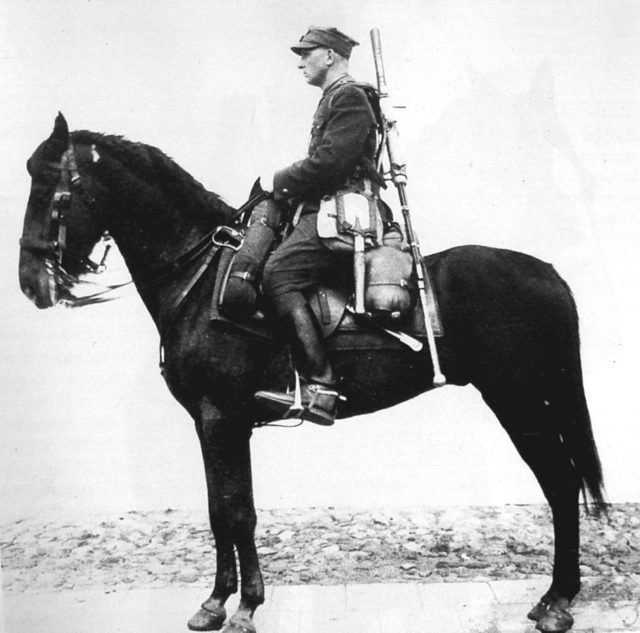
Imbalance in the Air
The Germans both outnumbered and outclassed the Poles in the air. The Luftwaffe, Germany’s air force, had 4,700 modern planes. The Polish Air Force had 842. Even the best Polish fighter, the PZL P.11, was no match for its opponents. Its top speed was 240mph, compared with the Messerschmitt Bf109E’s speed of 350mph.
The P.11 pilots still made a dent in the Luftwaffe. Their machines were not fast, but they were nimble. They destroyed 126 Luftwaffe aircraft in the war.
The Speed of Blitzkrieg
Poland was the perfect opportunity for the Germans to show off their new tactic of Blitzkrieg – “lightning war.” Poland had wide open countryside, across which armored columns raced at speed. Dive-bombers accompanied them, taking out defenders so that tanks and transport vehicles could keep moving.
Blitzkrieg was designed to create an overwhelming psychological shock to break an enemy’s will to fight. Through speed, surprise, and superior forces, it paralyzed the enemy and proved there was no point in resisting.
It was a huge success. By September 8, German armored troops had advanced 140 miles in seven days across Polish territory, reaching the outskirts of Warsaw, the capital city.
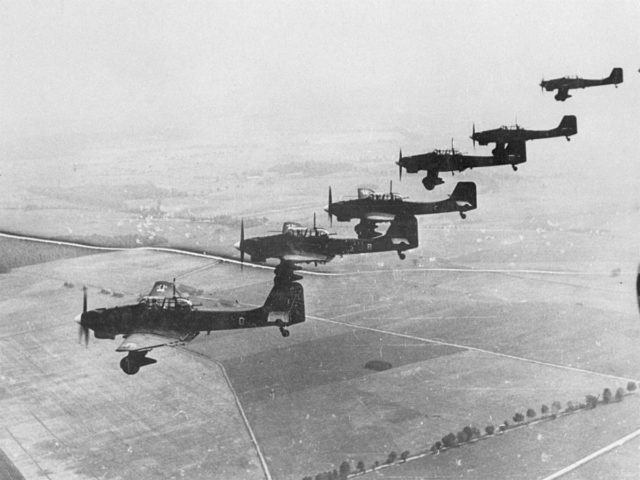
Problems of Military Structure
The structure of the Polish military was a hindrance to their efforts. They were not organized to be able to provide the flexibility or concentration of force needed for the war. For example, fighter units were assigned to different armies around the country and could not be coordinated to respond to the German bombers.
Brest-Litovsk
At Warsaw, some German forces became bogged down in fighting against the city’s stubborn defenders. The German General Guderian kept moving, leading his XIX Corps in a 100-mile advance southeast. Reaching Brest-Litovsk, he combined tanks, infantry, and artillery in an attack on defended ground. It was an opportunity for him to demonstrate what his ideas on tactics could achieve. It was also an overwhelming success.
Partitioning
On September 17, once the Germans had dealt with the bulk of the Polish armed forces, Russian troops entered Poland from the east. Hitler and Stalin had made a secret agreement to partition the country. The Poles, trapped between two of the greatest military powers in the world, were overwhelmed.
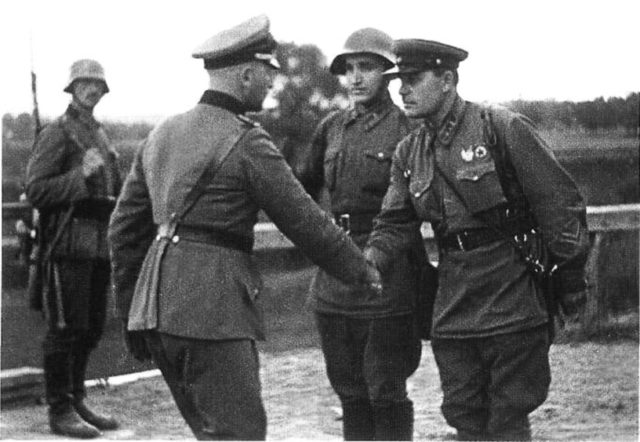
Fleeing to Romania
On September 18, the Polish high command and government crossed the border into Romania. From there, they went into exile. Their resistance was officially over.
Another 80,000 Polish soldiers followed them across the border in the days that followed. They went to Britain and France, where they continued to fight the Nazis.
Fighting for Warsaw
Although the government was gone, some Polish troops fought on. The garrison of Warsaw held out while the Germans smashed the city to rubble around them. They set its flour mills on fire and destroyed water supplies. Polish troops who had fought the Germans in the West rushed to the city. At one point German forces had to fight a battle on two fronts – maintaining pressure on the city while fighting off two advancing armies.
Stubborn resistance was not enough. Warsaw surrendered on September 28.
900,000 Prisoners of War
The Germans took 700,000 prisoners, the Russians 217,000. The Soviets murdered officers in the Katyn Forest. Many more people died due to their poor treatment by their captors.
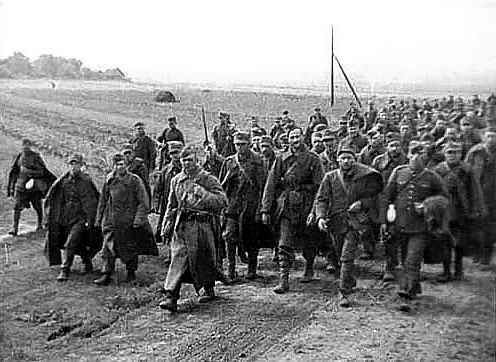
Unknown Losses
Nobody knows how many Poles were killed or injured during the invasion of their country. It was certainly more than the 45,000 casualties incurred by the Germans.
Continued Resistance
The last substantial Polish forces surrendered on October 5. Guerrilla fighting continued through the winter, and a resistance network was set up.
The Polish resistance provided invaluable assistance to the Allies over the years that followed, including intelligence and samples from the German rocket development program.
Sources:
Ralph Bennett (1999), Behind the Battle: Intelligence in the War with Germany 1939-1945
Nigel Cawthorne (2004), Turning the Tide: Decisive Battles of the Second World War
Francis Crosby (2010), The Complete Guide to Fighters & Bombers of the World
James Lucas (1996), Hitler’s Enforcers: Leaders of the German War Machine 1939-1945
David Rooney (1999), Military Mavericks: Extraordinary Men of Battle
